
Titanic acid is a general name for a family of chemical compounds of the elements titanium, hydrogen, and oxygen, with the general formula [TiOx(OH)4−2x]n. Various simple titanic acids have been claimed, mainly in the older literature. No crystallographic and little spectroscopic support exists for these materials. Some older literature refers to TiO2 as titanic acid, and the dioxide forms an unstable hydrate when TiCl4 hydrolyzes.
Chemometrics is the science of extracting information from chemical systems by data-driven means. Chemometrics is inherently interdisciplinary, using methods frequently employed in core data-analytic disciplines such as multivariate statistics, applied mathematics, and computer science, in order to address problems in chemistry, biochemistry, medicine, biology and chemical engineering. In this way, it mirrors other interdisciplinary fields, such as psychometrics and econometrics.
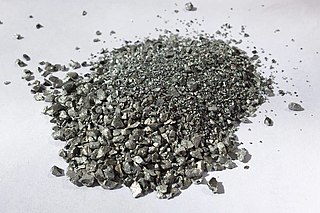
Devarda's alloy is an alloy of aluminium (44% – 46%), copper (49% – 51%) and zinc (4% – 6%).

Carl Remigius Fresenius, was a German chemist, known for his studies in analytical chemistry.

Analyst is a biweekly peer-reviewed scientific journal covering all aspects of analytical chemistry, bioanalysis, and detection science. It is published by the Royal Society of Chemistry and the editor-in-chief is Norman Dovichi. The journal was established in 1877 by the Society for Analytical Chemistry.

Matthias Mann is a German physicist and biochemist. He is doing research in the area of mass spectrometry and proteomics.

The Journal of Chromatography A is a peer-reviewed scientific journal publishing research papers in analytical chemistry, with a focus on techniques and methods used for the separation and identification of mixtures. The major difference between Journal of Chromatography A and Journal of Chromatography B is the focus being on preparative chromatography instead of analytical chromatography. The split of the Journal of Chromatography into two journals occurred in late 1993, with volume 652 being the first for Journal of Chromatography A.

Matrix-assisted laser desorption electrospray ionization (MALDESI) was first introduced in 2006 as a novel ambient ionization technique which combines the benefits of electrospray ionization (ESI) and matrix-assisted laser desorption/ionization (MALDI). An infrared (IR) or ultraviolet (UV) laser can be utilized in MALDESI to resonantly excite an endogenous or exogenous matrix. The term 'matrix' refers to any molecule that is present in large excess and absorbs the energy of the laser, thus facilitating desorption of analyte molecules. The original MALDESI design was implemented using common organic matrices, similar to those used in MALDI, along with a UV laser. The current MALDESI source employs endogenous water or a thin layer of exogenously deposited ice as the energy-absorbing matrix where O-H symmetric and asymmetric stretching bonds are resonantly excited by a mid-IR laser.

Capillary electrophoresis–mass spectrometry (CE–MS) is an analytical chemistry technique formed by the combination of the liquid separation process of capillary electrophoresis with mass spectrometry. CE–MS combines advantages of both CE and MS to provide high separation efficiency and molecular mass information in a single analysis. It has high resolving power and sensitivity, requires minimal volume and can analyze at high speed. Ions are typically formed by electrospray ionization, but they can also be formed by matrix-assisted laser desorption/ionization or other ionization techniques. It has applications in basic research in proteomics and quantitative analysis of biomolecules as well as in clinical medicine. Since its introduction in 1987, new developments and applications have made CE-MS a powerful separation and identification technique. Use of CE–MS has increased for protein and peptides analysis and other biomolecules. However, the development of online CE–MS is not without challenges. Understanding of CE, the interface setup, ionization technique and mass detection system is important to tackle problems while coupling capillary electrophoresis to mass spectrometry.
The Journal of AOAC International is a peer-reviewed scientific journal publishing research articles in the field of analytical chemistry and microbiology covering basic and applied research in analytical sciences related to foods, drugs, agriculture, the environment, and more. It is published by Oxford University Press on behalf of AOAC International and the editor-in-chief is David B. Schmidt. The journal was established in 1915 as the Journal of Association of Official Agricultural Chemists, obtaining its current name in 1992.

Journal of Chemical Theory and Computation is a peer-reviewed scientific journal, established in 2005 by the American Chemical Society. It is indexed in Chemical Abstracts Service (CAS), Scopus, British Library, and Web of Science. The current editor-in-chief is Laura Gagliardi. Currently as of the year 2022, JCTC has 18 volumes.
Bioanalysis is a sub-discipline of analytical chemistry covering the quantitative measurement of xenobiotics and biotics in biological systems.

The Journal of Radioanalytical and Nuclear Chemistry is a peer-reviewed scientific journal published by Springer Science+Business Media. It publishes original papers, review papers, short communications and letters on nuclear chemistry. Some of the subjects covered are nuclear chemistry, radiation chemistry, nuclear power plant chemistry, radioanalytical chemistry, and environmental radiochemistry.
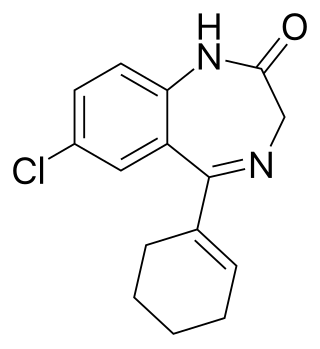
Nortetrazepam is a drug which is a benzodiazepine derivative. It is one of the major metabolites of tetrazepam.
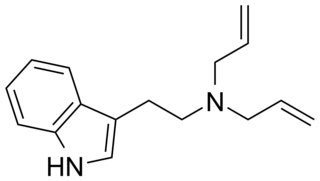
N,N-Diallyltryptamine (DALT) is a tryptamine derivative which has been identified as a new psychoactive substance. It has been used as an intermediate in the preparation of radiolabeled diethyltryptamine.
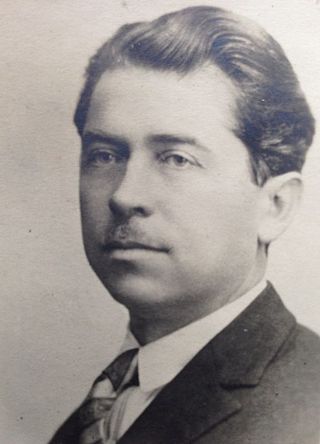
Constantin Cândea was a Romanian chemist, professor of Chemistry, Ph.D., engineer, and later Rector at the Polytechnic University of Timișoara between 1946 and 1947.

Bioanalysis is a biweekly peer-reviewed scientific journal established in 2009 and published by Future Science. The editor-in-chief is Neil Spooner. The journal covers the field of bioanalysis, including drug and metabolite assays, chromatography and separation sciences, ligand binding assays, metabolomics, and key detection methods.
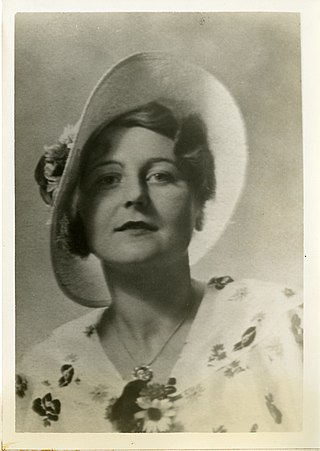
Edith Kroupa (1910–1991) was a research chemist who utilized microchemical analysis in the laboratory of Professor A. Franke at the University of Vienna. In 1930, Kroupa and Friedrich Hecht analyzed a sample of radioactive rock from the Huron Claim, Manitoba near Winnipeg, Manitoba, Canada. The team determined the sample to be over 1,725,000,000 years old.
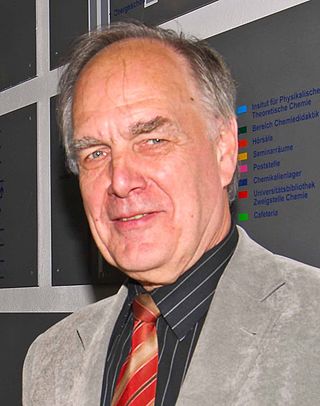
Reiner Salzer is a German chemist and university teacher of Analytical Chemistry at the TU Dresden.
Antje Baeumner is a German chemist who is Professor and Director of the Institute of Analytical Chemistry, Chemo- and Biosensors at the University of Regensburg in Germany. Her research considers biosensors and lab-on-a-chip devices for the detection of pathogenic organisms.















